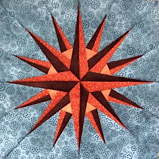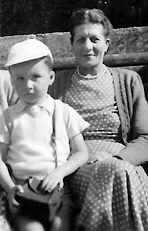Des Lewis will be 77 years old on 18 January 2025
Those who have read these episodic brainstorming reviews of mine must know they are very personal — rough-shod and spontaneous. Synchronicity and anagram mixed. I know they are not professional, never potentially publishable other than in the madness of my head, but I do hope they show grains of dark truth and cosmic panache.

These Des Lewis Gestalt Real-Time Reviews were founded in 2008.

‘What’s the loveliest word in the English language, officer? In the sound it makes in your mouth, in the shape it makes on the page? What do you think? Well now, I’ll tell you: E-L-B-O-W. Elbow.’ — THE SINGING DETECTIVE

“How shall a man find his way unless he lose it?” — Walter de la Mare

To any current genre author I have reviewed before — if you have a new story recently published or soon to be published in a collection or anthology, you may have a review by me of the story that also showcases where it is published. See HERE. (This is because I am no longer well enough to review as many books as I once did.)
Fresh Fictions, free to read HERE.
No AI input in preparation of my texts whatsoever.
THE NEW NONSCENIC
Photos here: https://conezero.wordpress.com/2024/02/24/d-f-lewis-recent-photos-1/

INTRODUCTION
…is an essay, inter alios, about books such as this one creating a physical time-haunted complement of — and gestalt addition to — their own word-contents that are otherwise printed upon their pages.
This stylish introduction, separate from the book proper but still within it, made me think of something I wrote earlier today here in an electronic conversation with Rhys Hughes (who is another Tartarean).
Bookish people often speak, as this introduction does, about the joy of books discovered in youth or childhood, a nostalgic vision of discovering authors, great and/or obscure, who then are all, of course, older than the reader. A tapping into such seasoned terrains of wisdom and creativity and imagination and sensitivity.
For me it is now even more powerful in relative old age to tap, as a form of inspired ‘second childhood’, into the ancient books of authors younger than myself, such as Mark Valentine, and certainly, as good examples, Rhys Hughes and John Howard (the latter being the dedicatee of this very book). There are many other examples for me of this ‘second childhood effect’ as my gestalt real-time reviews attest.
‘A Country Still All Mystery’: Machen, Sarban and Otherworldly Landscapes
“The English landscape was made, in other words, not just for food and shelter and pleasure, but also for the journey of the soul.”
Valentine’s style in fiction and non-fiction is immaculately crafted and involving. Take that as read. I will not repeat it in this review.
Instructive, too. The fairy folk not only as the past, as part of our heritage, are still alive in woods today? A short study of these aspects in Machen and Sarban. In the old days, I preferred the work of Sarban (John William Wall of whom there is a photo shown) to that of Machen. I wonder if I still wood.
‘Should I seek out some tree? Should I desert these form rooms and libraries, and the broad yellow page in which I read Catullus, for woods and fields?’
From ‘The Waves’ by Virginia Woolf
I am simultaneously reviewing this book here: https://dflewisreviews.wordpress.com/2017/07/25/the-waves-virginia-woolf/
‘An Atlas of Unknown Worlds’: Mary Butts, John Metcalfe and Stories of Strange Regions
‘The Bad Lands’ by John Metcalfe was a big influence on my early writing, so it was particularly interesting to read this essay that strongly features a view of that story.
My earlier review of ‘The Tower of Moab’ by LA Lewis: https://dflewisreviews.wordpress.com/2014/02/14/tales-of-the-grotesque-by-l-a-lewis/#comment-1850
I wrote above:
“Valentine’s style in fiction and non-fiction is immaculately crafted and involving. Take that as read. I will not repeat it in this review.”
Although, of course, I shall continue reading this beautiful book (of over 300 pages), I have decided there is little added value in writing for you or for me a real-time review of it. The gestalt method was designed by me for fiction, and although this is ABOUT fiction, it is essentially a book of non-fiction. I shall, however, show below its contents list – and an example of one of its generously supplied illustrations – to entice you into having a relationship yourself with this remarkable tome.
“It will appeal to anyone who has ever strayed into remote country which seems to be not quite fully in this world.”
From the book’s cover.
end
I’m finding Valentine’s prose style somewhat hard to get used to, it’s quite ‘vintage’. However the subject matter is endlessly fascinating.